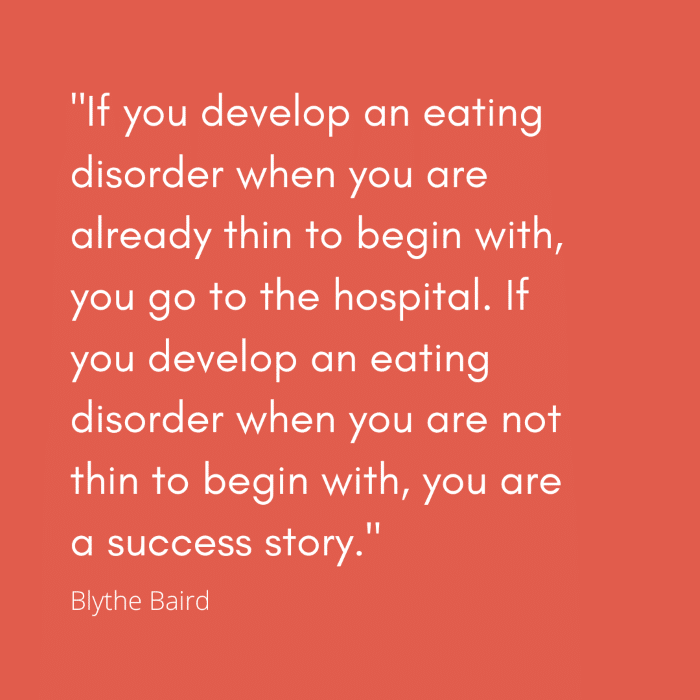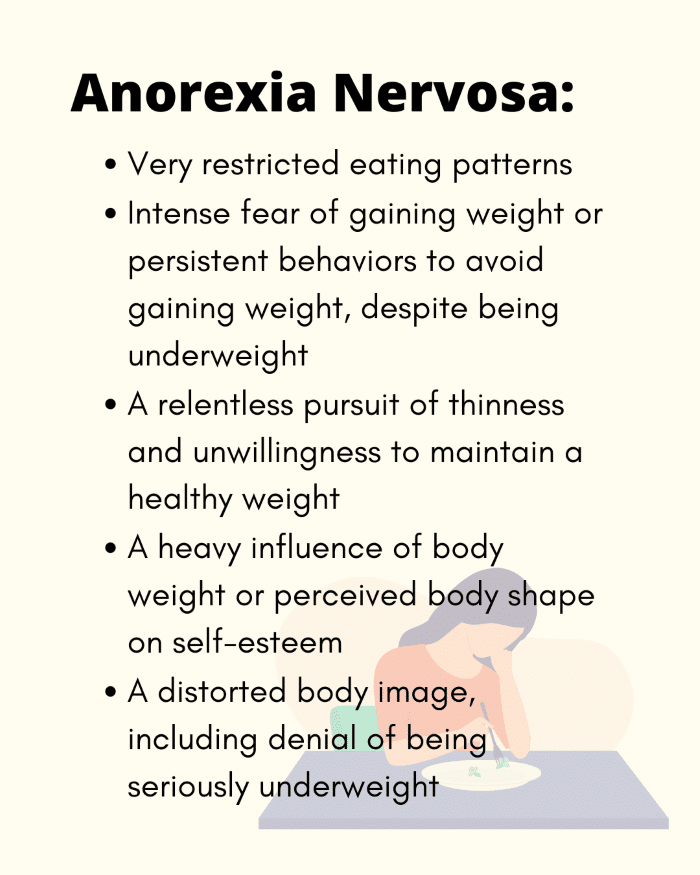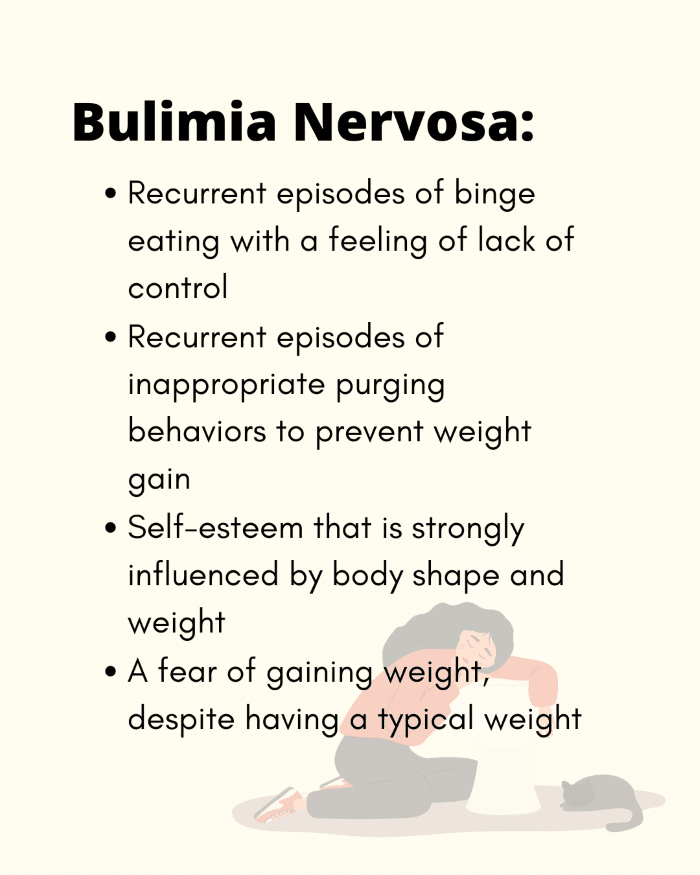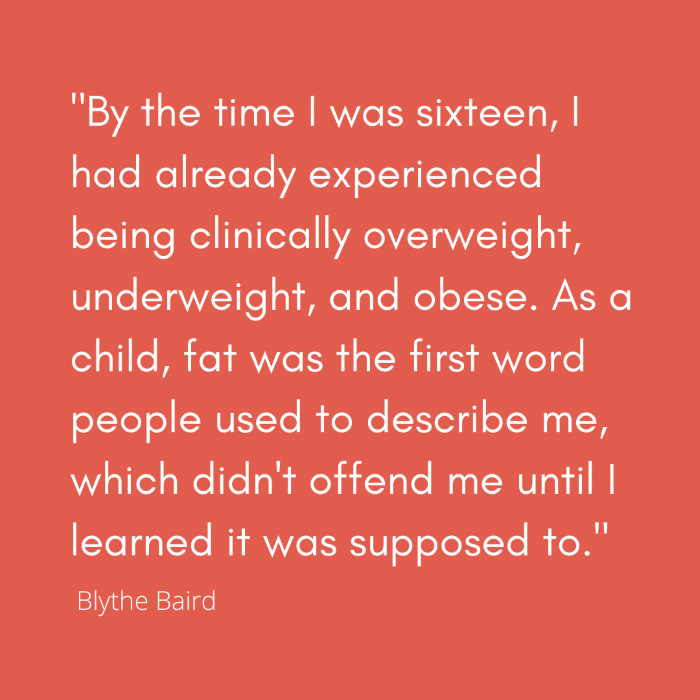“I say I am sick. They say no, you’re an inspiration. How could I not fall in love with my illness? With becoming the kind of silhouette, people are supposed to fall in love with.” — Blythe Baird
May is Mental Health Awareness Month, and we’re exploring eating disorders—some of the most pervasive and deadly mental health conditions.
Eating disorders slowly erode the body. Yet, they often go untreated—swept under the rug and even glorified until reaching a crisis point.

Often appearing in adolescence, they impact roughly 30 million people in the United States at some point during their lifetime.
Check out the Crash Course video below for an overview of eating disorders and their impact:
Exploring Eating Disorders
The physiological effects of eating disorders are devastating.
“If you are not recovering, you are dying.” — Blythe Baird
Impacts on the body include:
- Slowed heart rate
- Loss of bone density
- Fatigue
- Muscle weakness
- Hair loss
- Severe dehydration
- Very low body mass index
Eating Disorder Subtypes
While there’s a variety of different eating disorder diagnoses, including some not listed in this article, all share either the restrictive or binge/purge behaviors.
Restriction
Marked by an extremely low-calorie diet, excessive exercise, and purging via vomiting or laxatives
Binge/Purge
Involves episodes of binge eating combined with restrictive behavior
Common Eating Disorder Diagnoses
Below are the three most commonly diagnosed eating disorders.
Anorexia Nervosa
Marked by restrictive behaviors, those struggling with anorexia have an intense fear of gaining weight, a distorted body image, and a significantly low body mass index. And it’s thought to kill more people than any other mental illness.
Common symptoms of anorexia nervosa include:

Rigidness as a means to obtain control amidst feelings of powerlessness characterize anorexia.
Bulimia Nervosa
Bulimia is distinguished by binge eating followed by purging behaviors such as vomiting, using laxatives or diuretics, or excessive exercise. And it often goes unnoticed because those afflicted tend to maintain a normal or minimally healthy body weight.
Common signs of bulimia nervosa include:

While those grappling with bulimia aren’t always dangerously underweight, it damages the entire digestive system. Irregular heartbeat, inflammation of the esophagus and mouth, tooth decay, irregular bowel movements, stomach ulcers, pancreatitis, and organ damage all stem from the condition.
Binge Eating Disorder
Binge eating disorder is characterized by recurrent episodes of eating large amounts of food, losing control during these episodes, and experiencing shame or guilt afterward.
Getting to the Roots of Eating Disorders
Eating disorders have strong individual, gender, cultural, genetic, environmental, and upbringing components.
Individually, they are often rooted in a need for perfection, low self-worth, fear of falling short of expectations, and concerns with others’ perceptions. Gender and culture also have a significant role, with beauty ideals varying widely.

Genetics plays a hand—eating disorders tend to run in families. But more than simply biology, environmental factors, and upbringing are crucial pieces of the puzzle.
Children watch their caregiver’s relationship with food and the behaviors surrounding it. And learning unhealthy values around weight from family and peers has a powerful effect.
Need Support?
We’re here to help! With everything from therapy to in-home caregiver support and even therapeutic mentoring, we provide a wide range of mental health services tailored to each child’s unique needs, designed to empower families in treatment.
Call 406-245-6539 or contact us online to learn more about getting your child support through any of our locations across Montana.
Want to Learn More?
For more mental health tidbits, check out the rest of our blog, and follow us on social media. You can find us on LinkedIn at Youth Dynamics of Montana, Instagram @youthdynamicsmt, and Facebook at Youth Dynamics of Montana & People of Youth Dynamics.





